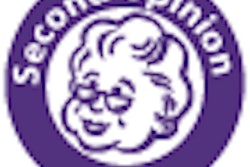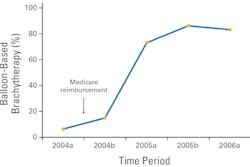Radiologists who interpret a high volume of screening mammograms have fewer false-positive findings and recall fewer women per cancer detected, according to research published online February 22 in Radiology.
While the researchers, led by Diana Buist, PhD, of Group Health Research Institute, were surprised to find no relationship between interpretation volume and sensitivity in the large study, they did discover a strong correlation between volume and specificity. In addition, radiologists who also read diagnostic mammograms were shown to have higher screening mammogram performance than those who interpreted very few diagnostic studies.
The research project, which was partially funded by the American Cancer Society (ACS) and the U.S. National Cancer Institute (NCI), included a review of data from six Breast Cancer Surveillance Consortium mammography registries in California, North Carolina, New Hampshire, Vermont, Washington, and New Mexico.
The study team evaluated a number of measures of interpretive volume in relation to screening performance for 120 radiologists who interpreted 783,965 screening mammograms between 2002 and 2006.
They measured volume in four ways: the number of screening and diagnostic mammograms read by a radiologist annually -- both separately and in combination -- and the ratio of screening to diagnostic mammograms. They then measured screening performance by sensitivity and false-positive and cancer detection rates.
Performance varied, not only by the number of exams interpreted, but also by the ratio of screening to diagnostic exams interpreted, according to the researchers.
The data suggest that radiologists who interpret screening mammograms should spend at least a portion of their time interpreting diagnostic mammograms, because radiologists who interpreted very few diagnostic mammograms had worse performance, even if they read a high volume of screening mammograms, Buist said in a statement.
Based on their findings that radiologists with higher annual interpretive volumes had lower false-positive rates than their lower-volume colleagues, the researchers simulated the effect of increasing the minimum interpretive volume required of radiologists practicing in the U.S. (currently 960 mammograms every two years).
If the annual minimum total volume requirement were increased to 1,000 mammograms a year, 43,629 fewer women would be recalled annually (based on 34 million women ages 40 to 79 receiving screening mammograms each year). And the estimated cost associated with false-positive results would be reduced to $21.8 million, according to the researchers.
The researchers acknowledged, however, that recommending any increase in U.S. volume requirements would entail crucial decisions about the relative importance of cancer detection versus false-positive exams and workforce issues. These changes could curtail workforce supply and women's access to mammography, Buist said.




















